

john biscoe (1843-
Early years
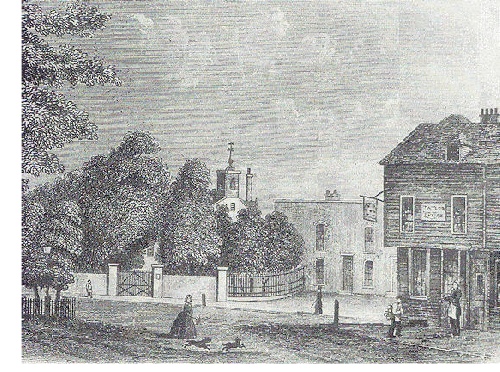 When Harriet Briscoe gave birth to her seventh child on 12 July 1843, she must have
been relieved to find she had borne a son: of the children she and William had already
produced, the only boy, William, had died in infancy in November 1838. Even so, her
happiness was tempered by the thought that there was now another hungry mouth to
feed.
When Harriet Briscoe gave birth to her seventh child on 12 July 1843, she must have
been relieved to find she had borne a son: of the children she and William had already
produced, the only boy, William, had died in infancy in November 1838. Even so, her
happiness was tempered by the thought that there was now another hungry mouth to
feed.
John was born at Hink’s Yard in Bromley-
Child of the parish
John’s name, and those of his siblings, appears in the Workhouse school register;
John’s name is the last entry in the extract below. The symbol ‘∫’ indicates ‘good’
behaviour, although other pupils were not so well-
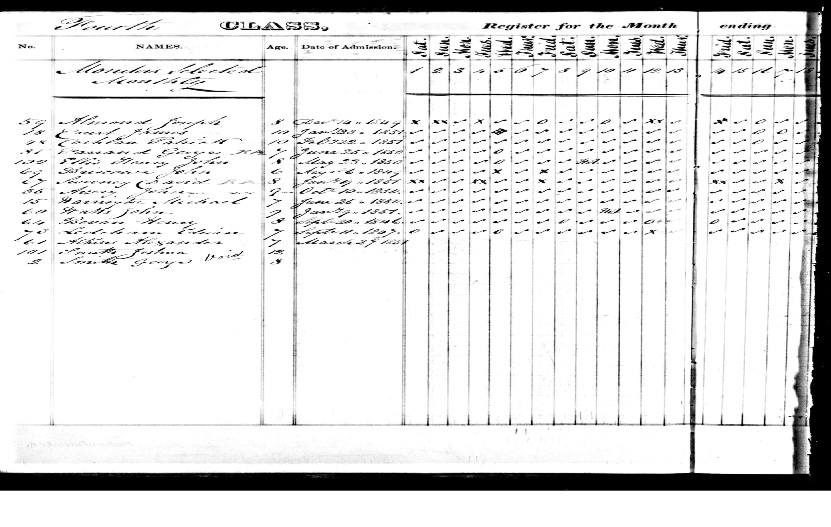
The comments made by the schoolmistress, Abigail Roberts, show a kindness and a compassion not often associated with the workhouse, and her scathing comments about the Master shows she was not afraid to express her concerns:
‘Great difficulty in keeping the children clean owning to the inefficiency of the Master and the very dirty state in which the new children are sent to the school.... but am told by him [the Master] it is my own duty to make the children clean.’
‘Conduct of children good, but the domestic arrangements and the children’s little ailments are much neglected, unless I am always present. I cannot go on any longer this way and shall lay it before the Board if there is no alteration.’
The Victorian workhouse has the reputation of a veritable prison which people entered only to leave in their coffin or, like Oliver Twist in Charles Dickens’ novel, to a harsh employer. Whilst this was the case for many people, it was not always so. People were free to leave at any time — provided they applied and changed out of their workhouse clothes into the clothes they had arrived in — and many people came and went according to their circumstances. John left the Workhouse on Easter Sunday 1851 together with his family; either his father had managed to find a steady job or John’s elder sister, Elizabeth was able to help. Curiously, John is recorded as an inmate again for the four days from 31 August 1854 to 4 September 1854.
On the outside
The family took whatever work they could find and the 1861 census shows John’s mother earning money as a washerwoman. His siblings, Lucy and Alfred, were working in a match factory which was both poorly paid and dangerous, whilst John’s brother Charles was labouring in an iron foundry. John, on the other hand, was listed as having ‘no occupation’. It did not bode well.
Life carried on with the family managing to make ends meet. By the Spring of 1866,
John had met Susan Webb. Although only about twenty years old, she already had a
young child and was without a husband. Her daughter, Mary Ann, had been born on 24
March 1864 and baptised in April at the Church of St Mary, Bromley-

Less than two years later, on Boxing Day 1866, Susan gave birth to John’s son, 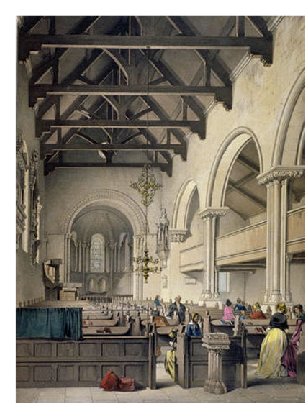 a
boy whom the coupled named Thomas, but it was only on 1 April 1868 that John and
Susan took him to the Church of St Mary where they presented themselves as ‘John
and Susannah Biscoe’, although there is no evidence that they ever married. Another
child, Sophia, followed on 30 July 1869 whilst John and Susan were living at 9 Oliver
Court.
a
boy whom the coupled named Thomas, but it was only on 1 April 1868 that John and
Susan took him to the Church of St Mary where they presented themselves as ‘John
and Susannah Biscoe’, although there is no evidence that they ever married. Another
child, Sophia, followed on 30 July 1869 whilst John and Susan were living at 9 Oliver
Court.
Between August 1869 and April 1871 John and his family moved to 29 Franklin Street,
one of many streets that were built south of Priory Street from the 1860s. Numbers
19 and 20 Franklin Street are pictured below in the late nineteenth century; a comfortable
house for a modest-
A few years later in 1874, the family moved to ‘Wesley House’ off Bromley-
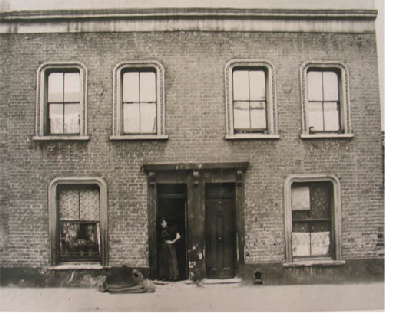 Parting company
Parting company
By November 1878, John’s common-
Whatever the case, for a short period in 1878 John lived at 20 Harts Lane some miles
away in Bethnal Green. It was here he met Sophia Baxter. She had been born in the
Suffolk market town of Bury St Edmunds. Although the population of Bury St Edmunds
doubled in the nineteenth century, during the same period the population of England
quadrupled, so Bury’s population decreased in relative terms. Sophia was 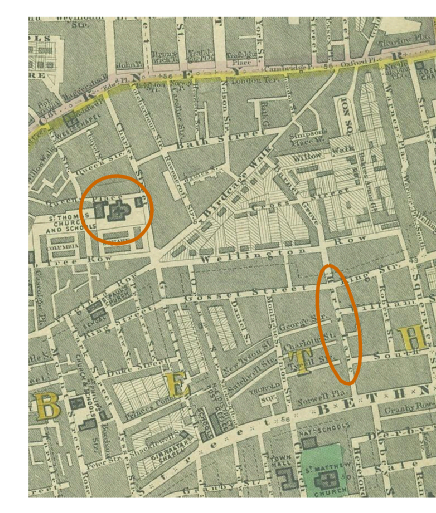 one of many
people who left the town and headed to London in the 1870s. She settled in Bethnal
Green and in 1878 was living at 8 Harts Lane, a few doors from John.
one of many
people who left the town and headed to London in the 1870s. She settled in Bethnal
Green and in 1878 was living at 8 Harts Lane, a few doors from John.
During the time John and Sophia spent talking to each other in the street or on the doorstep, how much of his past did John recount? Whatever the answer, John and Sophia were married on 20 October 1878 at the Church of St Thomas in Bethnal Green. The bride had little, if any, family in London, but John’s family attended the wedding and John’s brother and sister, Alfred Biscoe and Elizabeth Nash were witnesses. Both John and Alfred were able to sign their own names, no doubt a result of the two years they spent in Poplar Union Workhouse; the bride and Elizabeth Nash made their mark. The marriage register also shows that John had not been idle and was now working as a slater, a skilled job and a step up from his days as a general labourer.
Bethnal Green was one of the poorest parishes in London. The map on the right, dating
to 1862, shows the density of Bethnal compared to Bromley-
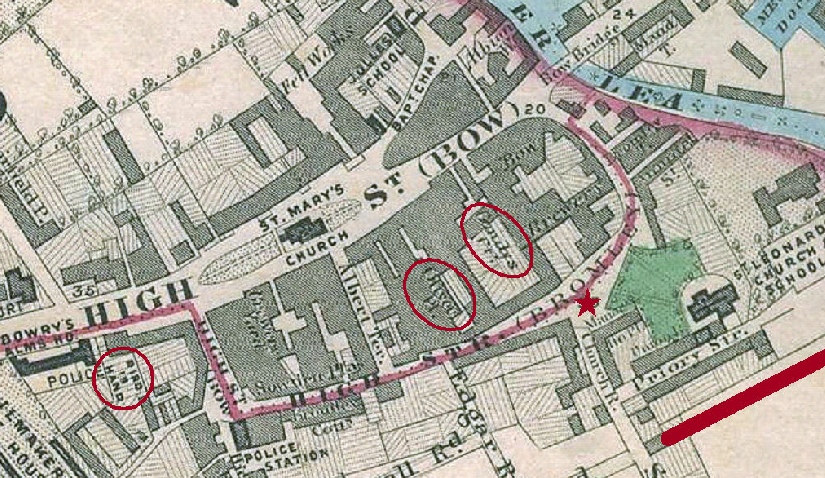
By 1891, John and Sophia had left Gandy Court, moving the short distance to 758 Old Ford Road, which ran north west from the High Street following the course of the River Lea. Although only 25 years old when she married, Sophia and John do not appear to have had any children; certainly none were listed in either the 1881 or 1891 census.
During this period, Sophia, who had given her occupation in 1881 as a tailoress, no doubt worked from home to supplement her and John’s income. John died sometime between 1891 and 1901. Considering how often the ‘Biscoe’ name had been misrecorded over the years, it is not surprising that the register of his death has not been located, particularly as Sophia Biscoe, with her Suffolk accent, was likely to have been the informant. After his death, Sophia continued to live at 758 Old Ford Road, taking in lodgers and sewing. She died in 1905.
john briscoe
(1843-
m
living moss
(born 1947)
living moss
(born 1968)
m
william moss
(1911-
who’s related to whom

| paternal tree |
| maternal tree |
| index of names |
| moss tree |
| biscoe tree |
| monger photos |
| moss photos |
| collins photos |
| bostock photos |
| george moss |
| william moss |
| george c moss |
| william evans |
| eleanor evans |
| gregory family |
| thomas gregory |
| thomas gregory |
| sissey family |
| christopher sissey |
| sissey children |
| brisco family |
| webb family |
| sykes family |
| william briscoe |
| john biscoe |
| briscoe children |
| betsy biscoe |
| charles webb |
| thomas webb |
| susan webb |
| nathaniel sykes snr |
| nathaniel sykes |
| james bostock |
| george bostock |
| james g bostock |
| edwin f bostock |
| may bostock |
| marie wicks & sarah homan |
| homan bostock family |
| steward family |
| charles steward |
| ducro family |
| esther steward |
| mary & ann steward |
| stephen ducro |
| mary ducro |
| Ann_Briggs |
| hockerday family |
| thomas hockaday |
| mary ann hockerday |
| peters family |
| william peters |
| joseph peters |
| emily a peters |
| joseph collins |
| samuel collins |
| joseph collins |
| henry j collins |
| florence a collins |
| william shepherd |
| ann e shepherd |
| rogers family |
| john rogers |
| sarah a rogers |
| harvey family |
| thomas harvey |
| ann harvey |
| grigg family |
| william monger |
| charles monger |
| george monger |
| albert j monger |
| benham family |
| thomas benham |
| mary a benham |
| stephen dunford |
| fanny dunford |
| cawte family |
| robert cawte |
| william cawte |
| john r cawte |
| reynolds family |
| william reynolds |
| emma reynolds |